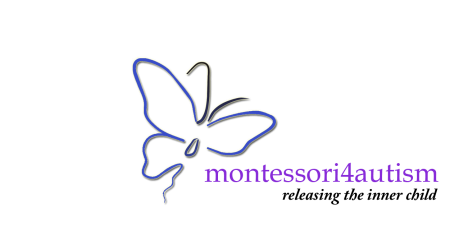Each child with ASD should have an individualized behavioral plan, which is usually developed by a BCBA and should be followed by all staff working with the child. This behavioral plan describes the child’s challenging behaviors (such as stimming, avoidance, or tantrums) and provides detailed strategies for managing them in the classroom. In addition to the behavioral plan, I usually provide the staff with a summary of best teaching practices for my son, as well as strategies for meeting his sensory needs and dietary restrictions.
Despite demonstration of pivotal skills, children with ASD may not at first exhibit interest and initiative in a classroom setting without assistance. It is recommended that the Guide makes consistent use of
visual schedules, which will likely ease anxiety and provide a predictable, yet flexible, daily flow with frequent sensory breaks between the activities. The child’s choices should initially be limited (perhaps a couple at a time) and presented to the child in a clear manner – either through pictograms or simple language instructions.
Whereas typical children are capable of absorbing and integrating information from different sources and environments, children with ASD learn in a more sequential or deliberate way and have difficulty generalizing acquired knowledge. Therefore, attention should be paid to carefully identifying prerequisites for targeted skills and generalization of mastered skills across various materials and environments.
For younger children with autism, I would recommend using ABLLS-R – The Assessment of Basic Language and Learning Skills – Revised in combination with the Montessori curriculum. ABLLS® is an assessment tool, curriculum guide, and skills-tracking system used to facilitate instruction of language and critical skills for children with autism or other developmental disabilities. It provides a comprehensive review of over 500 skills from 25 skill areas including language, social interaction, self-help, academic and motor skills.
Michelle Lane, founder of Autism Montessori Services, has developed a manual “Autism – A Montessori Approach (Program Tracking Manual and Curriculum Guide For Children with Autism and other Communication Disorders)“ , which integrates ABA with Montessori curriculum.
, which integrates ABA with Montessori curriculum.
To the extent possible, lessons should be adapted to match the individual learning style of a child with ASD. Most autistic children learn best with plentiful visual aids, and they find working with concrete materials and manipulatives to be calming. Lessons should be given in segments equal to the child’s attention span, which should gradually lengthen when reinforced by success. Tasks for the child to perform should be divided into manageable parts, with each demonstrated slowly.
In the Montessori educational model, a foreign language is introduced at an early age, often to students in Children’s House (ages 3 to 6). For those with autism, it might be better to eliminate this requirement or delay it until they show readiness. My son participated in group foreign-language instruction for a couple of years but was overwhelmed by it. Our school accommodated him by dropping this requirement for the time being, and he now spends this extra time on other subjects.
I have a background in teaching English as a second language (ESL), and I see many similarities between adults learning a second language and how children with ASD acquire their native language. In each case, learning is deliberate, labor-intensive, and systematic. This similarity deserves more attention from educators and clinicians since methods and materials already developed for ESL instruction – which emphasizes structured, gradual, and sequential language acquisition, and generalization across different contexts – might be effective for individuals with autism. I personally found ESL materials to be highly effective for my son, who is attracted to patterns and systematization. Thus, ESL methods seemed to naturally match his logic of language acquisition.
A mother on my parent network has remarked that her teenage son with autism still struggles to conduct a conversation in his native English but excels at French in school. Contrary to nearly everyone’s expectations, instruction in a foreign language brought some great and surprising benefits for this boy. For example, it boosted his self-esteem, as he found in the context of a foreign language that he could more than match the progress of his typically developing peers. It is widely acknowledged that learning a foreign language generally enhances one’s understanding of their native language. For ASD children, it might help them discover gaps and systemically build vocabulary in their native language, as they are encouraged to find English equivalents for common foreign terms. It might even help them improve skills in reading comprehension since they are required to extract key information from simple paragraphs as part of studying a foreign language. I can’t help wondering if this bright teenager would have been much more proficient in his native English had it been taught to him through ESL methodology at an early age.
Again, I think that ESL methods and materials could facilitate language acquisition in many autistic children. I would like to see ESL specialists become certified in speech pathology and add a new dimension to teaching language skills to children with ASD. Likewise, speech pathologists can potentially be more effective in working with ASD children if they familiarize themselves with ESL methodologies. I would also like to see greater emphasis on developing illustrated versions of popular literature with simplified vocabulary appropriate for autistic children. Books of this type are routinely and successfully used by foreign language learners, and they would be much appreciated by children with ASD.
, which integrates ABA with Montessori curriculum.
